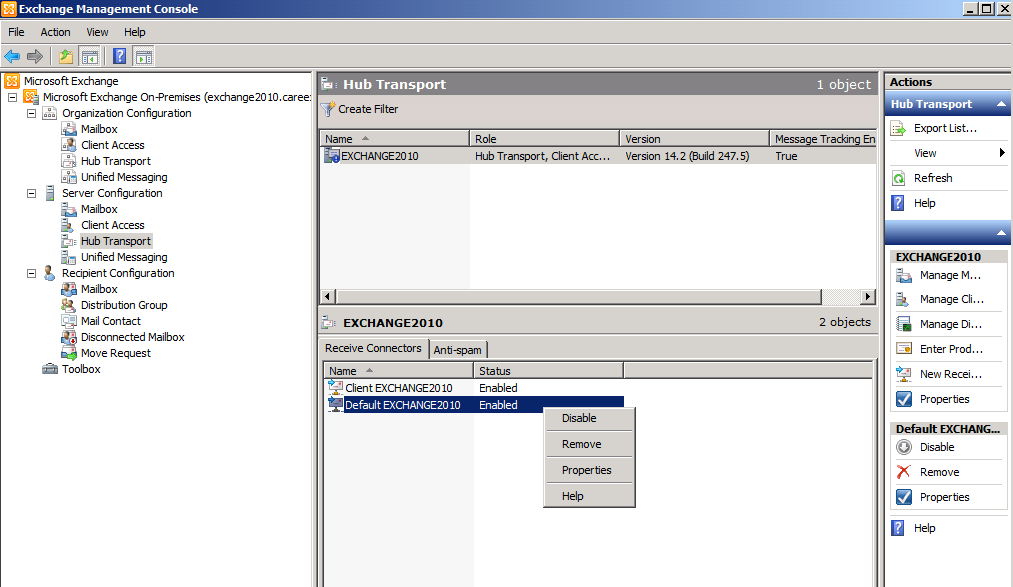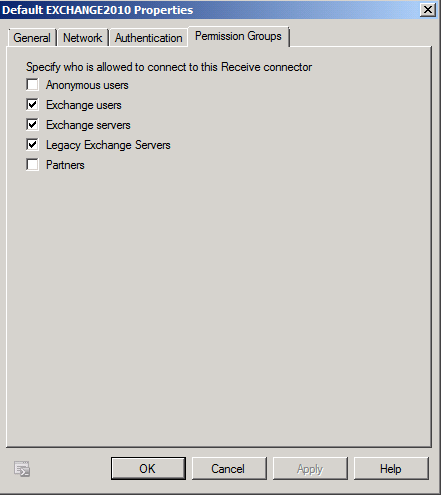Default receive connector needs to be configured to receive emails from internet.
To Pretty simple to do it
Open Exchange Management Console – Server Configuration – Hub Transport
Right click on Default connector and select Properties.
Select Permissions Groups tab and check Anonymous users permissions group
Great !!
Your Server Will receive mails from Internet now (If your Firewall Points to Exchange 2010 Server)




Simply want to say your article is as surprising. The clarity in your post is simply cool and i could assume you are an expert on this subject. Well with your permission let me to grab your RSS feed to keep updated with forthcoming post. Thanks a million and please carry on the gratifying work.
FQDn for Receive connector
Please take a look the mail flow as below
mail server A (Linux, maila.test.com) – send mail — Exchange 2010 mail B (mailb.local.com)
Exchange mail want to receive email from mail A, on Exchange server we create Receive Connector with the name “mailA”.
And then, I wonder whether we type the “FQDN of Exchange server: mailb.local.com ” in FQDN field of [receive connector: mailA] ?
And it’s same as “Send connector” to send email to mail A from Exchange server ?
Thank in advance.
you and assign the IP of MailA.test.com
So that it can receive mail from MAIL server A.
to Send email from MAIlA
you can Use FQDN of MailB from Mail A
Satheshwaran, I am presently using your article connecting from a Microsoft document ” Rapid Migration Guide fro Exchange 2003 to Exchange 2010″. Really good guide. I have one question though.
“If I check “Anonymous User” on the connector will this be a problem with other persons relaying? Or I guess it need to be checked for persons to relay?
Andrew
No , It wont cause any issues on the person who is relaying .
Its nothing to do with relaying.
Its checked by default in Exchange 2013. Do check on Exchange 2010.
Thank you for your quick attention to my question.
Andrew
Hi,
In default and client connector all IP and all ports are allowed
Why need to create new connector and
How to check which authentication is required for third party application auto triggering and else?
Hi there friends, how is all, and what you desire to say regarding
this post, in my view its actually remarkable in support of me.
Hi there, constantly i used to check weblog posts here
in the early hours in the break of day, for thee reason that i love to
learn more and more.
An outstanding share! I’ve just forwarded this onto a colleague who was conducting a
little research on this. And he actually ordered me
lunch simply because I found it for him… lol.
So let me reword this…. Thanks for the meal!! But yeah, thanks for spending
the time to discuss this topic here on your web page.